Some horses have been galloping through history for centuries, and they’re still here today. These ancient breeds aren’t just animals; they’re living legends!
From the towering steeds of ancient civilizations to the trusty companions of explorers, these 18 horse breeds have stood the test of time. They’ve weathered wars, changed landscapes, and been the backbone of societies throughout history.
But what makes them so special? Their resilience, grace, and connection to our past make these breeds truly one-of-a-kind. And guess what? They’re still rocking the world today, running strong and proud.
Let’s take a trot through time and discover the oldest horse breeds that have galloped their way into history—and into our hearts!
Przewalski’s Horse
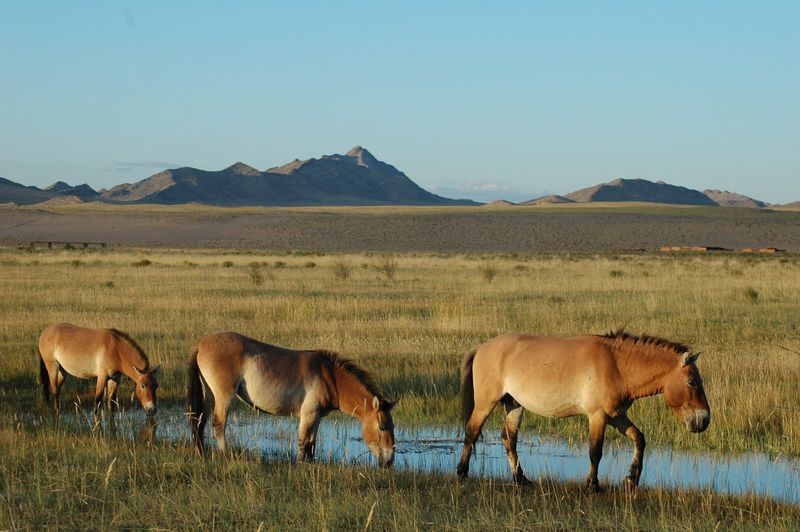
Przewalski’s Horse, an iconic symbol of untamed wilderness, roams the steppes of Mongolia. With its stocky build and stiff mane, it stands as the last truly wild horse. Przewalski’s Horse has a fascinating history, having been saved from the brink of extinction. In the 20th century, captive breeding programs brought them back, and they were reintroduced into their natural habitat. Known for their resilience, these horses have adapted to harsh environments, embodying the spirit of survival. As you watch them trot across the plains, the connection to ancient times feels almost tangible.
Arabian Horse
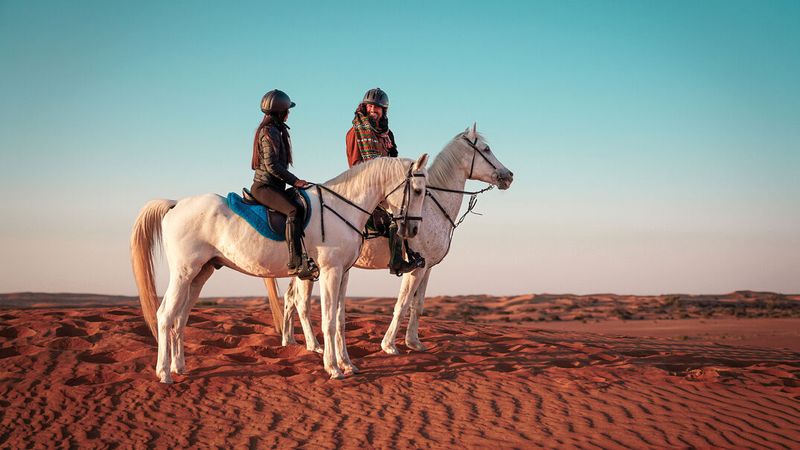
The Arabian Horse, with its mesmerizing beauty and unmatched endurance, is a breed that captures the essence of elegance. Originating from the Middle East, this horse has been a companion to Bedouin tribes for millennia. Its distinctive head shape and high tail carriage make it easily recognizable. Arabian horses are celebrated not only for their physical attributes but also for their intelligence and spirit. Their ability to thrive in arid climates and their significant contributions to other horse breeds highlight their enduring legacy. An Arabian galloping through the desert is a sight to behold.
Norwegian Fjord Horse
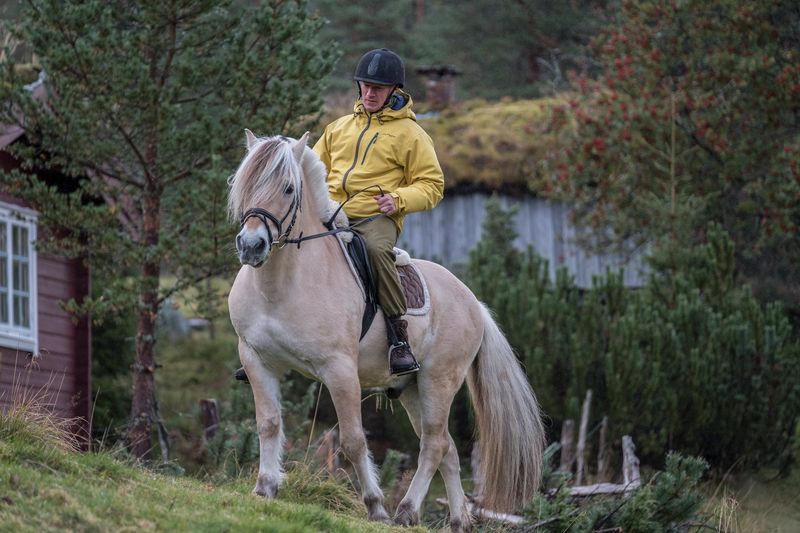
The Norwegian Fjord Horse, with its compact, muscular build and unique coloration, has been a versatile helper to humans for centuries. This breed, native to Norway, is instantly recognizable by its distinctive dorsal stripe and dun coloration. Fjords have a gentle yet strong demeanor, often used in farming and forestry. Their resilience in cold climates and their ability to work tirelessly are testaments to their strong lineage. Observing a Fjord Horse in its natural environment, one can appreciate the blend of beauty and function this breed embodies.
Icelandic Horse
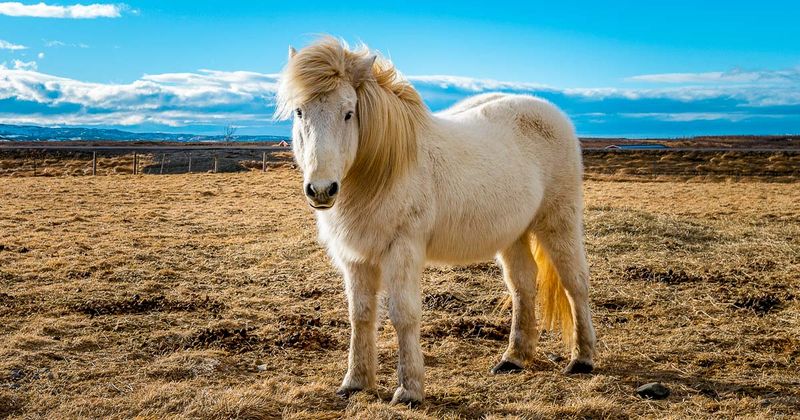
The Icelandic Horse, with its charismatic presence and unique five gaits, is a breed that stands out in the equestrian world. With roots tracing back to the Viking era, these horses have adapted to the harsh Icelandic climate. Their double coat provides insulation against the cold, while their surefootedness allows them to traverse rugged terrain with ease. Known for their friendly disposition and spirited temperament, Icelandic Horses have a special place in the hearts of many. Watching one perform the smooth tölt gait is a mesmerizing experience.
Exmoor Pony

The Exmoor Pony, native to the moorlands of southwest England, is a breed that has retained its primitive characteristics over centuries. With a robust body, thick mane, and distinctive “toad” eyes, it thrives in the wild. These ponies have a rich history, with roots tracing back to the Celtic era. Their natural hardiness and ability to survive harsh conditions make them remarkable. As one of the oldest native pony breeds, Exmoor Ponies continue to play a vital role in conservation grazing, maintaining the ecological balance of their habitat.
Akhal-Teke

The Akhal-Teke, often referred to as the “Golden Horse,” is renowned for its shimmering metallic coat and slender frame. Originating from Turkmenistan, this breed is celebrated for its speed, endurance, and grace. With a history intertwined with nomadic tribes, the Akhal-Teke has been a trusted companion and a symbol of prestige. Known for their unique physical traits and spirited nature, these horses possess an aura of mystery and allure. Standing in the desert, an Akhal-Teke with its lustrous coat gleaming under the sun is a sight of elegance.
Andalusian Horse

The Andalusian Horse, a breed synonymous with grace and poise, originates from the Iberian Peninsula. Known for their expressive eyes and flowing mane, Andalusians have a rich legacy in classical dressage. Their intelligence and versatility make them exceptional performers in various equestrian disciplines. With roots going back to ancient times, these horses have been favored by nobility and celebrated in art and literature. Watching an Andalusian execute a precise dressage movement is akin to witnessing a live dance performance, where strength and beauty converge seamlessly.
American Mustang
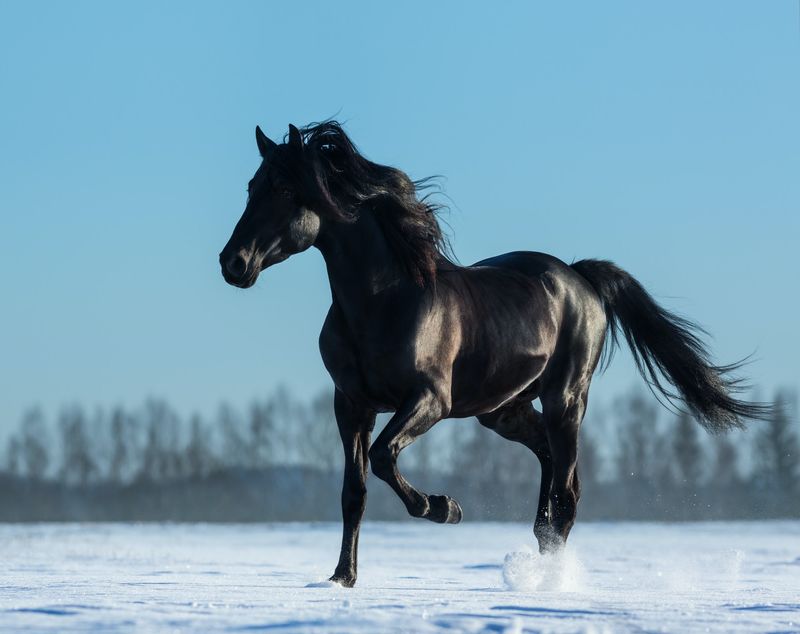
The American Mustang, a symbol of freedom and untamed beauty, roams the vast plains of the United States. These horses, descendants of Spanish explorers’ steeds, have adapted to the diverse American landscape over centuries. Known for their versatility and resilience, Mustangs are a testament to survival and adaptation. With a spirited temperament and a natural instinct for self-reliance, they evoke a sense of adventure. Observing a Mustang gallop across the open plains, one can’t help but feel the wild spirit that defines this remarkable breed.
Marwari Horse

The Marwari Horse, with its distinctively curled ears, hails from the Marwar region of India. Known for their loyalty and endurance, Marwaris have a storied history intertwined with Indian royalty. These horses, often seen in ceremonial parades, are admired for their striking appearance and spirited nature. With a deep-rooted connection to Indian culture, Marwaris are more than just a breed; they are a symbol of pride and heritage. Witnessing a Marwari adorned in vibrant traditional tack is like stepping into a historical tapestry, rich in color and tradition.
Dales Pony
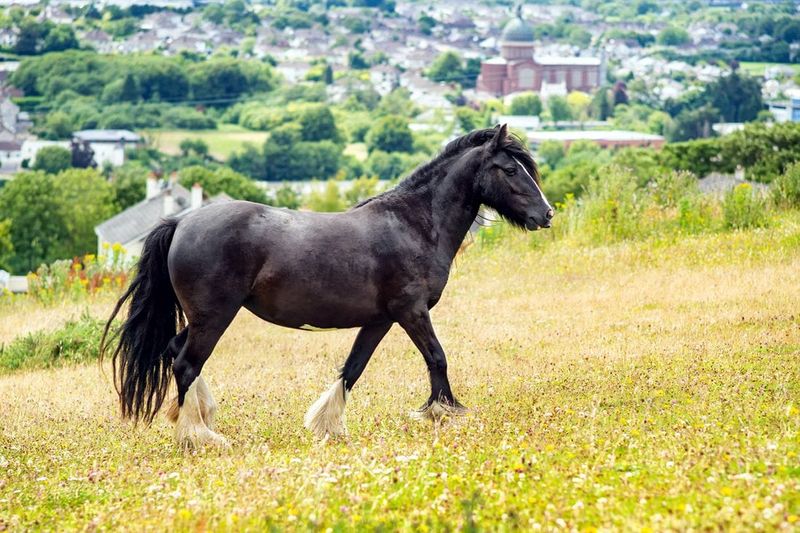
The Dales Pony, a breed known for its strength and resilience, originates from the rugged terrains of northern England. With a solid build and gentle demeanor, these ponies have been reliable companions in agriculture and industry. Their surefootedness and endurance make them ideal for traversing challenging landscapes. Dales Ponies have a rich history, often used in lead mining and as pack horses. Standing amidst the scenic English countryside, a Dales Pony embodies the harmony between strength and gentleness, a true testament to its enduring legacy.
Shetland Pony
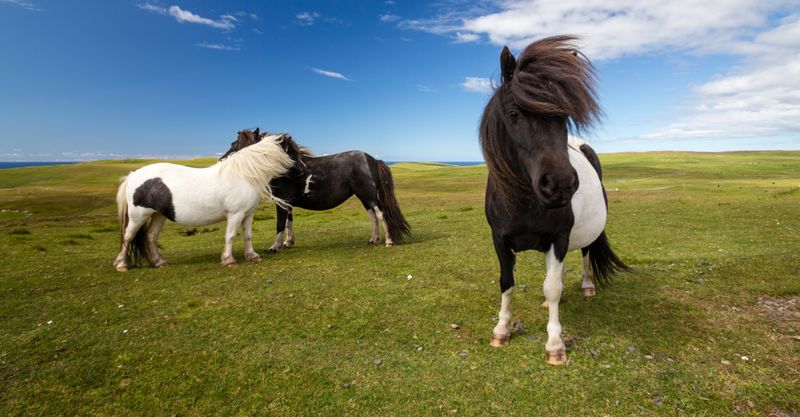
The Shetland Pony, small in stature but large in personality, hails from the Shetland Islands in Scotland. These ponies are known for their robustness, able to thrive in harsh climates with minimal care. With their thick, fluffy coats and gentle eyes, Shetlands are a favorite among children and families. Despite their size, they have a strong work ethic, historically used in coal mines and agriculture. Watching a Shetland Pony frolic in the fields, it’s easy to see why they’ve captured hearts worldwide. Their spirited charm is simply irresistible.
Falabella
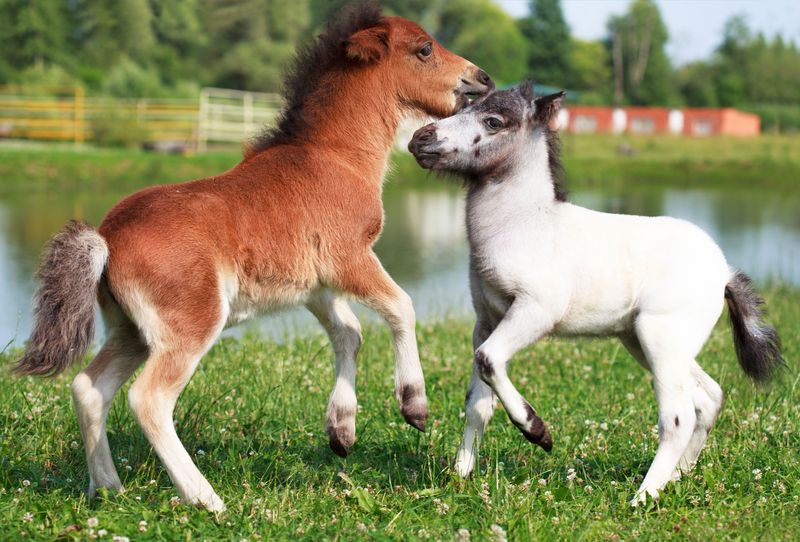
The Falabella, a miniature marvel, is a unique breed that fascinates with its diminutive size and delicate features. Originating from Argentina, this breed is the result of careful selective breeding. Despite their small stature, Falabellas possess the grace and poise of larger horses. They have become popular as pets and companions due to their gentle nature and manageable size. Watching a Falabella trot in a garden is akin to observing a living piece of art, where elegance meets charm. Their presence is a testament to the wonders of equine diversity.
Caspian Horse
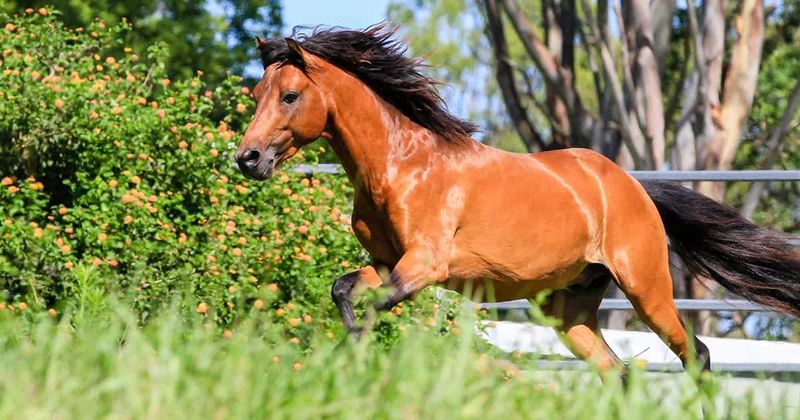
The Caspian Horse, often regarded as a living relic of equine history, boasts a lineage tracing back to ancient Persia. With its small yet elegant stature, the Caspian is believed to be one of the oldest horse breeds still in existence. Known for their gentle nature and agility, these horses were highly prized by Persian nobility. The Caspian’s ability to adapt to various terrains and its spirited personality make it a cherished breed. Observing a Caspian in its historical homeland, one can almost feel the echoes of ancient Persian legends.
Konik Horse

The Konik Horse, a breed with roots in Eastern Europe, is closely related to the ancient Tarpan, the wild horse of Europe. With a robust body and primitive appearance, Koniks have been instrumental in rewilding projects. Their ability to thrive in natural environments makes them ideal for conservation efforts. As you observe a Konik grazing in the Białowieża Forest, it’s easy to appreciate their role in preserving biodiversity. Their presence in the wild offers a glimpse into the past, where untamed horses roamed freely across Europe.
Fell Pony

The Fell Pony, with its flowing mane and sturdy build, is a breed that thrives in the rugged landscapes of the Lake District, England. Known for their versatility, Fell Ponies excel in various equestrian disciplines, from driving to dressage. Their surefootedness and strength make them excellent partners for traversing rocky terrains. With a rich history as pack animals and working ponies, Fell Ponies have been part of England’s heritage for centuries. Watching a Fell Pony navigate the hills, one can’t help but admire their grace and tenacity.
Yakutian Horse
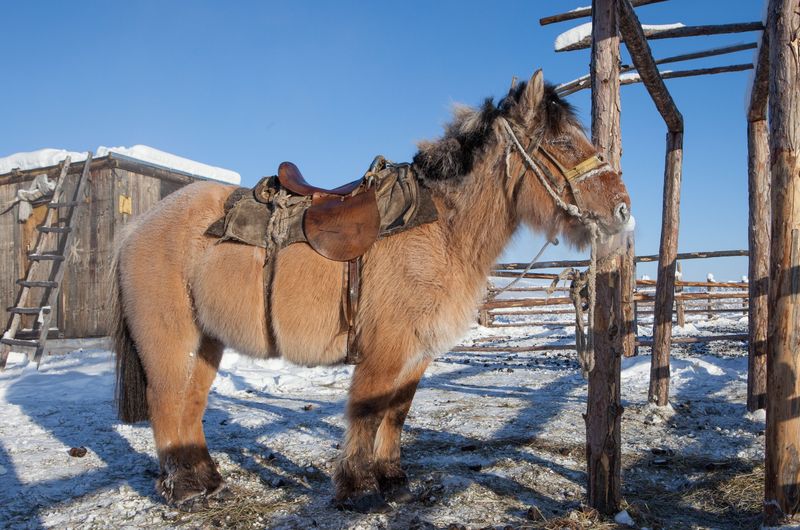
The Yakutian Horse, a remarkable breed native to the frigid regions of Siberia, is known for its incredible adaptations to extreme cold. With a thick coat and a robust constitution, Yakutian horses can withstand temperatures below -50°C. Their ability to graze through snow and find food in harsh conditions is extraordinary. These horses have been indispensable to the Yakut people, serving as transportation and companions. Observing a Yakutian Horse in the snowy Siberian landscape, one can appreciate the blend of nature’s resilience and beauty embodied in this breed.
Mongolian Horse
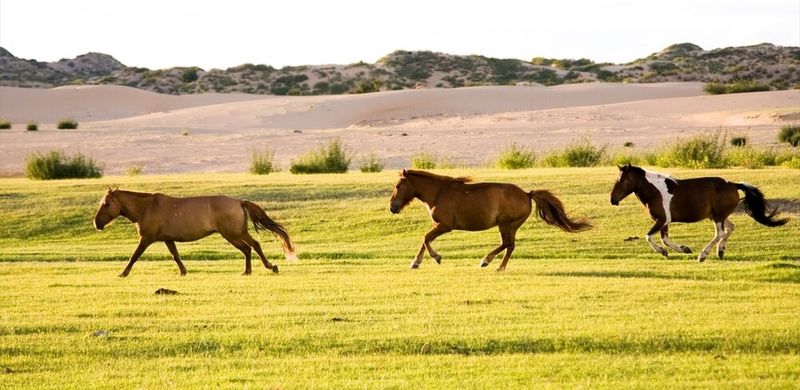
The Mongolian Horse, a breed integral to nomadic life, is renowned for its hardiness and endurance. With a compact, stocky build, these horses have roamed the vast steppes of Mongolia for millennia. Their role in Mongolian culture and history is profound, often associated with legendary figures like Genghis Khan. Mongolian horses are highly adaptable, able to survive harsh climates and long distances without much support. Witnessing a herd of Mongolian horses galloping across the steppes is a powerful reminder of their enduring spirit and cultural importance.
Bashkir Curly
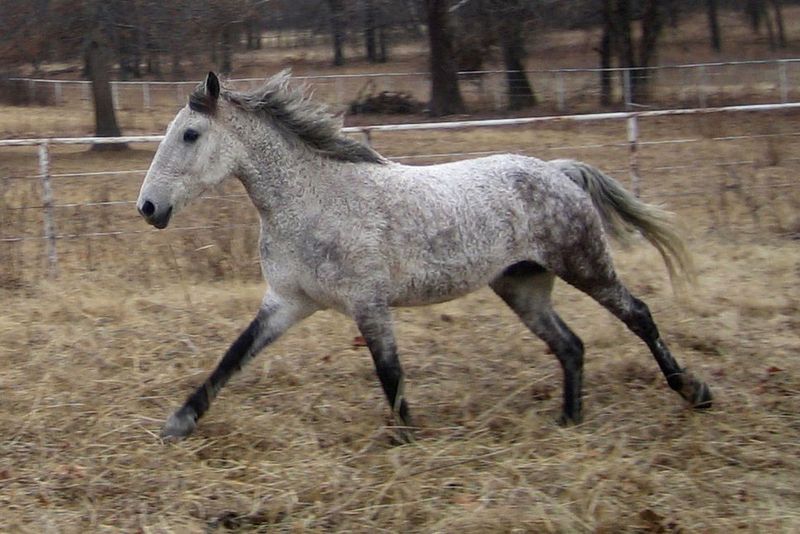
The Bashkir Curly, known for its distinctive curly coat, is a breed that stands out not just for its appearance but also for its hypoallergenic properties. Originating from Russia, these horses have a gentle and intelligent demeanor, making them excellent companions. Their unique coat helps them withstand harsh winter conditions, and their adaptability has made them popular in various equestrian disciplines. Observing a Bashkir Curly in a frosty landscape, it’s easy to see why they’ve captured the fascination of horse enthusiasts worldwide. Their charm is truly one-of-a-kind.

